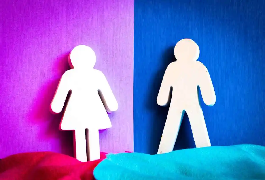According to the “Women and Men in India 2023” report released by the Ministry of Statistics and Programme Implementation, India’s population is expected to reach 152.2 crore by 2036, with the female percentage rising slightly to 48.8% from 48.5% in 2011. The report also predicts that the number of people under 15 years old will decrease by 2036 due to lower fertility rates, while the proportion of those aged 60 and above will significantly increase during this time.
India’s Gender Ratio To Improve by 2036, Report Highlights Key Data On Equality
Report states that India’s population in 2036 will have a more balanced gender ratio compared to 2011, with the sex ratio expected to rise from 943 women per 1,000 men in 2011 to 952 by 2036, indicating progress in gender equality.
The report provides a detailed overview of the status of women and men in India, covering data on population, education, health, economic participation, and decision-making. It includes gender-specific data across urban and rural areas and different regions, highlighting disparities. The key indicators are based on data from various ministries, departments, and organizations. The report stated that gender statistics are crucial for promoting and measuring gender equality because they provide benchmarks for progress and highlight the similarities and differences between men and women.
Report Highlights Trends In Fertility Rates And Impact Of Education On Family Planning
The report indicates that between 2016 and 2020, the age-specific fertility rate (ASFR) decreased for women aged 20-24 and 25-29, dropping from 135.4 to 113.6 and from 166.0 to 139.6, respectively. However, the ASFR for women aged 35-39 increased from 32.7 to 35.6, suggesting that women are choosing to expand their families later in life after settling down.
The report says that in 2020, the adolescent fertility rate was 33.9 for illiterate people and 11.0 for those who were literate. Even women who are literate but have no formal education had a lower fertility rate of 20.0 compared to illiterate women. This emphasizes the importance of educating women.



